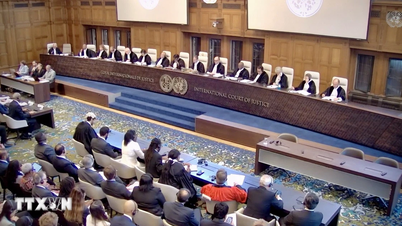The record came just two weeks after the government was allowed to continue borrowing without limits through 2024.
US President Joe Biden (right) and House Speaker McCarthy during a discussion on the debt ceiling at the White House on May 22, 2023.
According to data released by the US Treasury Department on June 16, this week, the US national debt surpassed a record $32,000 billion for the first time in history.
The milestone comes less than two weeks after President Joe Biden signed a bill that suspends the $31.4 trillion debt ceiling, averting the risk of a U.S. default. The measure allows the U.S. government to continue borrowing without limit until January 1, 2025, when the debt ceiling suspension ends. This means the government can continue to pay for domestic public services such as Social Security and Medicare.
The debt ceiling was suspended after repeated warnings from the US Treasury that if it was not implemented, the US would default on its obligations. In January, the US debt clock hit $31.4 trillion, hitting the borrowing limit, forcing the US Treasury to take extraordinary measures to keep the government running and avoid a default expected in early June. The warning from the Treasury set off a months-long debate between Republicans and Democrats over spending priorities, putting the measure's approval at risk.
On the first business day after the debt ceiling was suspended, federal borrowing increased by about $400 billion.
According to the New York Times (NYT), the $32 trillion mark was reached nine years earlier than predicted before the COVID-19 pandemic. Experts say that to avoid another crisis, the government needs to address the factors that lead to debt.
“As we race toward $32 trillion with no end in sight, it’s time to address the underlying causes of debt, which are increased mandatory spending and a lack of revenue to service that debt,” Michael A. Peterson, head of the Peter G. Peterson Foundation, told the NYT. The foundation projects that the U.S. could add $127 trillion to its debt over the next 30 years, with interest costs accounting for about 40 percent of the nation’s federal revenue by 2053.
Source









![[INFOGRAPHIC] LG xboom AI: The coolest Gen Z portable speaker this summer](https://vphoto.vietnam.vn/thumb/1200x675/vietnam/resource/IMAGE/2025/7/29/db13af6569c24d0582b8a1c82e7cecd2)
















![[Photo] National Assembly Chairman attends the seminar "Building and operating an international financial center and recommendations for Vietnam"](https://vphoto.vietnam.vn/thumb/1200x675/vietnam/resource/IMAGE/2025/7/28/76393436936e457db31ec84433289f72)










































































Comment (0)